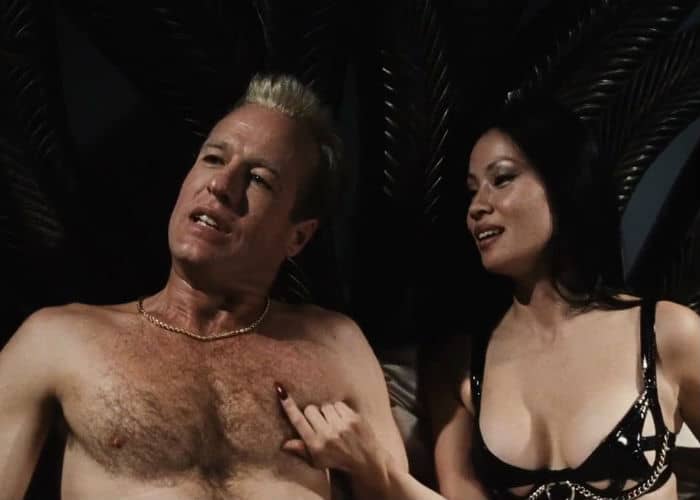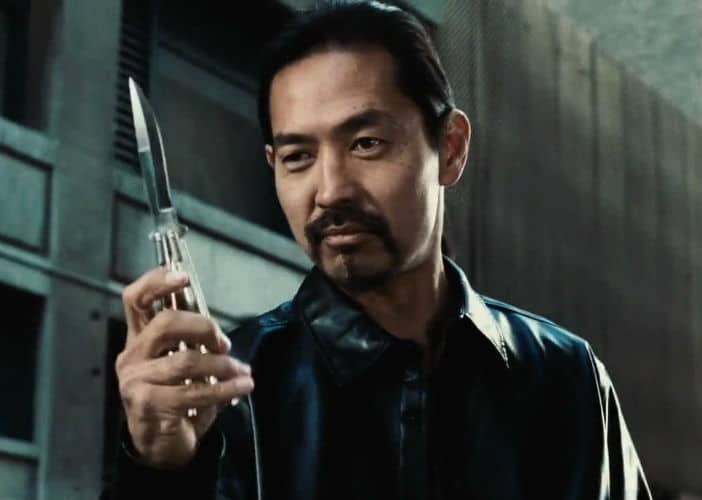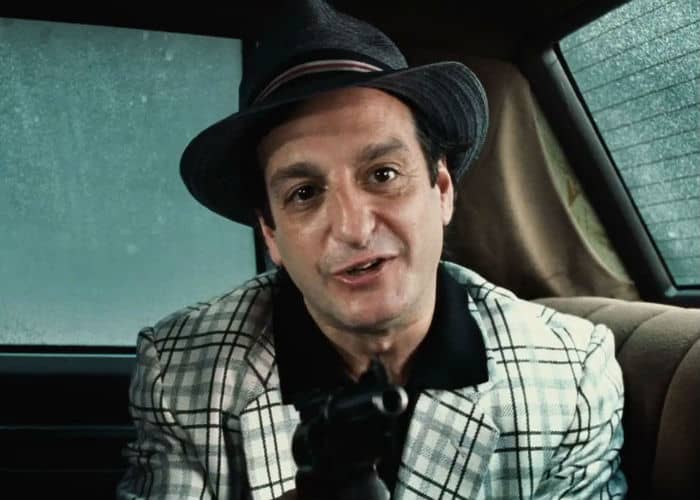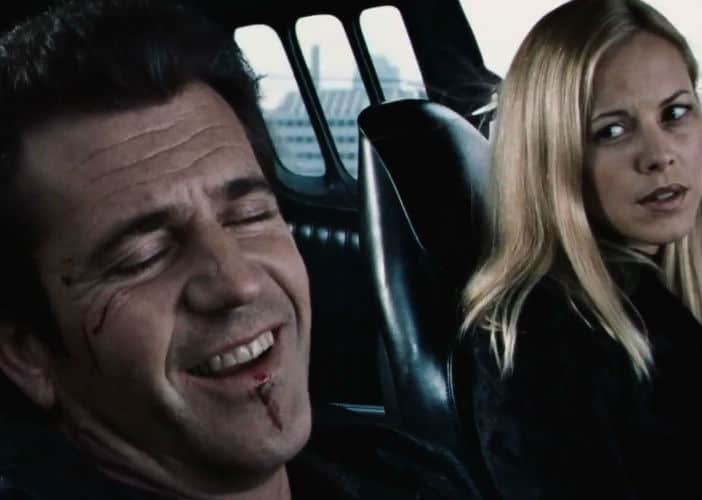Payback is not only one of the most entertaining movies of 1999, but it’s also one of the best films of 2007. Writer/director Brian Helgeland was fired from movie after refusing to make certain changes to the film, so the studio stepped in, re-edited and shot new footage, and released the movie to theaters with great success. It’s a fun, violent, and cathartic flick, but it’s not the movie Helgeland set out to make. He got the chance to amend that a few years later with the release of his director’s cut, and the result is a leaner, meaner, and every bit as fantastic piece of cinema.
He recorded a commentary track for this new cut’s home video release in 2007, and while enough time had passed for his bitterness to fade he’s not shy about sharing his honest thoughts on the experience. Keep reading to see what I heard on the commentary track for…
![]()
Payback (1999)
Commentator: Brian Helgeland (writer/director)
1. The commentary was recorded seven or eight years after the film’s initial release.
2. The definition of “principle” given at the film’s start belongs to both Helgeland and Porter (Mel Gibson). He added it after the studio expressed concern that audiences might not know Porter was acting on principle… and might not even know what a principle is. “But I know you guys get it.”
3. He’s always loved it when films pair their opening credits with part of the story rather than just names on a blank screen, so he designed “a sequence in which Porter puts his life back together.”
4. The film follows a world filled with criminals both high-end and low-end as well as the relatively honorable Porter leaving the average folks “very much in the back ground, and by definition Porter is the good guy in this world because he’s the guy with the code.”
5. The scene where Porter pickpockets the guy’s wallet required an open casting call to find someone who looked reasonably enough like Gibson. The guy who got the gig wasn’t an actor but had been told throughout his life that he bore a resemblance to Gibson.
6. He always wanted to end a film with the lead character smiling, and it was an idea influenced by the end of Cool Hand Luke (1967). It was a big reason why he wouldn’t — couldn’t — reshoot a different ending for this film as this is the end it had to have. “I couldn’t explain that to anyone in a room because it wouldn’t have made sense, but that’s the story.”
7. This cut sees Porter’s arrival at his wife’s (Deborah Kara Unger) apartment followed immediately with a scene where he smacks her around. “The idea was to push the audience away from this character and have you really wondering what in the world we’re dealing with here, and then you learn why.” It’s more challenging for the viewer to discover afterward that she betrayed him and shot him in the back. The theatrical cut just sees his entrance bursting through the door and then her carrying her to bed.
8. Unger actually cracked two ribs when she falls at 8:31. “I only bring up because I think she’s actually very proud of the fact that she left it all on the field.”
9. The flashback shot at 14:25 of Porter on the phone was meant to have him shirtless so we could see his back free of bullet wounds, “but for some reason we shot it with a shirt on which I can never remember why we did that.”

10. A lot of actors were attracted to the Val Resnick character, but it was the always fantastic Gregg Henry who nailed the audition and made casting anyone else impossible.
11. An old French Citron is visible in the warehouse scene at 18:51, and Helgeland theorizes “some French heisters left it there two years ago on a job and haven’t come back for it.”
12. He was in post-production on this film the night of the Academy Awards, and having been nominated for his L.A. Confidential (1997) script he really hoped he would be named the winner. “I knew that they were getting close to finally removing me off this movie,” and he thought winning the Oscar would mean they couldn’t fire him. He won, Sean Connery tussled his hair backstage while congratulating him, and that was his Sunday night. “And on Tuesday I got fired. So much for the magic of an Academy Award.”
13. Walter Matthau handed him his Oscar. Matthau starred in Charley Varrick (1973). The restaurant scene at 32:53 was filmed in a place called Varricks.
14. He came across Maria Bello via her audition reel for Lois Lane which was for a Superman incarnation at WB that never happened in 1996.
15. There’s a subtle difference between versions in the scene where Porter wakes up Val. The theatrical cut lets the Dean Martin song on the radio play as if its part of the soundtrack, but for this one Helgeland dropped it back to the radio itself as he didn’t feel this was the kind of film that would feature that song that way.
16. “I think tonally this is one of the scenes that got me into a little bit of trouble,” he says as Pearl (Lucy Liu) beats up Val. “Tonally, I think it confused the studio.”
17. An early teaser strung together the film’s funnier scenes, and both audiences and the studio responded favorably. He protested and was told by the marketing department that “what it is is one thing, and selling it is another thing.” The studio clearly wished the movie “was more like our trailer, and I didn’t know it at first but it became this struggle for what the heart of the movie was about.” Re-shoots began leaning heavily toward the teaser’s tone, and the writing was on the wall.

18. The gangster with the knife at 50:00 is played by Jeff Imada who also served as stunt coordinator on L.A. Confidential, Hanna (2011), Furious 7 (2015), and more.
19. He doesn’t consider screenwriting to be “writing” — unlike novelists or biographers — and instead sees it as simply part of filmmaking. Directing is what he built towards through his career as not only was it the most important part of filmmaking but also he believed a director’s word is final. “When it got to not be that way I just got stubborn,” and that led to his dismissal. “It was painful while it was going on, but I was better for the experience.”
20. “Mel and I had a very stripped-down working relationship on the film,” he says, adding that he wanted a basic, Road Warrior-like performance and approach from the actor. “I was always going for less with him,” and after a few days of filming Gibson realized he basically wanted less personality. “That’s what I liked about my version of Porter, was the less personality version, this kind of stark, bitter, stripped-down character.”
21. This version’s big boss is simply a voice (Sally Kellerman) on the phone, and that became an “in” into creating a new ending and third act for the theatrical version — “and maybe a more satisfying ending from a straight commercial, making the audience happy point of view, but for me it became where Porter doesn’t feel like Porter anymore exactly.”
22. “Once I got into the movie business anyone I met just became a co-worker,” but the giants from his movie-loving youth continue to hold mystique and give him pause. James Coburn’s arrival on-set followed suit as a legend.
23. Coburn was unhappy with the cheap cigars they had available for his character to smoke, and after assistants failed to locate any good ones nearby the actor suggested Gibson’s trailer was worth a shot. Gibson wasn’t on-set yet, so Coburn entered his trailer, ransacked it, and found what he was searching for.

24. The car interior at 1:14:45 between Porter and Stegman (David Paymer) had to be shot with the windows fogged up because spectators were lining the street to watch. They’re magically clear when the car pulls into the alley because they were better able to control the crowd there.
25. A studio executive sent a note saying she didn’t understand why the Chinese gangsters wanted to kill Stegman. He replied that they’re actually trying to shoot Porter but that he’s using Stegman’s body as a shield. “She said she didn’t think that was clear, so that’s what I was up against.”
26. “As far as getting fired for shooting a dog in the film I think the other reason I got fired is this scene in the meat truck.” Porter shoots an unarmed man in cold blood, and while no one complained that he did the same to William Devane‘s character, Helgeland caught holy hell for this one. He explains the killing simply by saying that the man insulted Rosie (Bello), and now that Porter is back to looking out for her that kind of transgression can’t stand. “I used to halfway joke that it was the most romantic moment in the movie.”

27. He debated between two endings — Porter loses the money after being shot to a passing homeless person but still lives, or Porter gets the money only to die from the gunshot wound. He went with the latter as it’s more proper for a noir, and his implication is that Porter dies just moments after the fade to black. “But he smiles because he’s come to town and done what he meant to do which is make things right.” For the more positive-thinking viewers, though, he allows that maybe Rosie gets him medical attention and he’s going to be okay.
Best in Context-Free Commentary
“Here’s a guy who will rob a homeless guy, so you know what you’re dealing with right off the bat.”
“Smiling is not a thing that Porter does easily.”
“The thing with junkies is you always have to check their shoes.”
“A primer gray Chevy Nova is the only Chevy Nova… of course, Plymouth Roadrunners can only be green, just as Trans Ams can only be red.”
“Here we have one of the great headboards ever.”
“The director could be just as second-guessed as the screenwriter. The directors just do a better job of not talking about it. Screenwriters wanna complain and show you their wounds and tell you what happened to them and who did what to them.”
“When executives have comments a lot of the times the audience is way ahead of them in my experience.”
“Why do the Chows hate Stegman?”
“I like the old honesty of this place. It was just sturdy and steel mesh and girders and pigeons and rotten old wooden sills that had fifty years of initials carved into them. That’s where Porter lives, that’s his world, and that’s what we tried to get across.”
“In a film noir world there’s no riding off into the sunset.”
“Don’t even fake kill a dog because no one will tolerate it. So that’s my final advice to filmmakers out there. Don’t even have a dog in your movie.”
Final Thoughts
This is a suitably fantastic commentary track for a fantastic film. Helgeland offers an honest look back at his directorial debut, both the highs and the lows of the experience, and he comes out of it loving filmmaking even more. He also has a great stance during the end credits saying that every name we see is of a filmmaker — they’re not the most high profile, obviously, but they’re all important. Fans should definitely give this one a listen (after re-watching the movie for the umpteenth time).
Read more Commentary Commentary from the archives.
The post 27 Things We Learned from Brian Helgeland’s ‘Payback’ Commentary appeared first on Film School Rejects.



0 comments:
Post a Comment